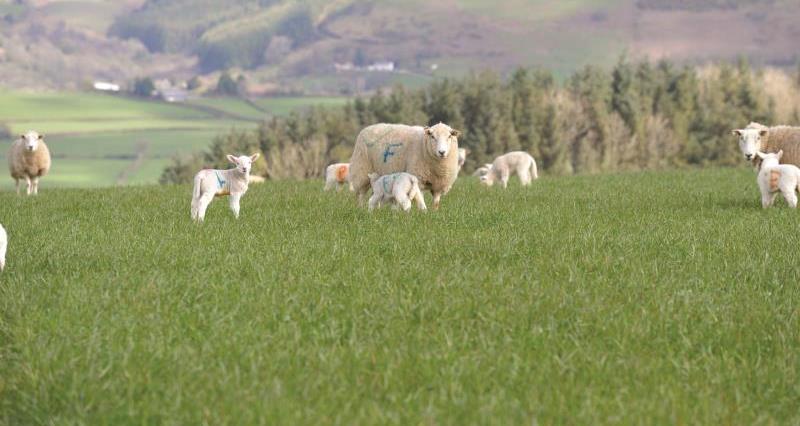The Welsh Way: Towards Global Leadership in Sustainable Lamb and Beef Production examines how Welsh red meat stands in the global context of sustainability and food security.
New analysis of the GHG footprint of Welsh livestock farms suggests that:
- Hill sheep can have a lower GHG footprint per unit of output significantly lower than in other studies, putting them on a par with lowland systems. The footprint for upland beef was also lower in this new analysis .
- Lowland beef had the largest footprint reflecting the greater use of inputs but these inputs only led to a relatively small increase in output.
The report also identifies big opportunities to improve the productivity of Welsh livestock farms so that more output per head is achieved from the breeding stock and reduce GHGs:
- Sheep: ~20% emissions reduction is possible while maintaining output of prime lamb through improving lamb survival rate, reducing replacement rate of ewes etc
- Beef: ~11% emissions reduction while maintaining output of prime beef including through calf survival to weaning and increasing feed efficiency

NFU livestock board chairman Richard Findlay (above) said: “The benefits of improved productivity for business profitability and helping our industry to get to net zero are clear. A well-managed flock or herd will optimise growth rates, reduce days on farm and require fewer inputs such as feed and medicine.”
The report also considered sequestration on farm. Using best estimates the different farming systems could be sequestering about 2 – 3.5 kg CO2e/kg product with sequestration highest for hill and upland farms. However soils are also a source of nitrous oxide and significant extra carbon storage may be limited in soils under permanent grasslands.

NFU uplands forum chairman Thomas Binns (above) said: “It’s really welcome news that the GHG impact of hill farming in particular may be lower than previous studies have reported. And it also shows how we need an effective way of capturing the carbon sequestration on farm to help us as farmers account for its value. As upland farmers we are proud to be able to protect the environment and produce climate friendly food.”
When the balance of emissions and sequestration were calculated, net emissions were marginally greatest for lamb from upland farms, and beef from lowland farms.
On average little was sequestered in woodland and hedgerows. The report suggests that the strategic planting of trees and hedges in a way that complements, and indeed enhances livestock performance such as through shelter provision, could help increase carbon sequestration and should be encouraged
The calculations excluded CO2 arising from on-farm energy use (which would not be high in some systems) and embedded in the manufacture of inputs so the results are therefore only a partial reflection of Welsh red meat production. HCC also rightly urges caution in directly comparing results the different studies.
You can read the report here.
Climate-friendly farming and net zero
- Visit our net zero pages and add yourself to our Pledge Map. The map is anonymous and only zooms into 10km. The map shows how many farms are making positive steps on their net zero journeys.
- Download the NFU's public-facing climate friendly farming leaflet containing facts about British meat production.
More from NFUonline:

